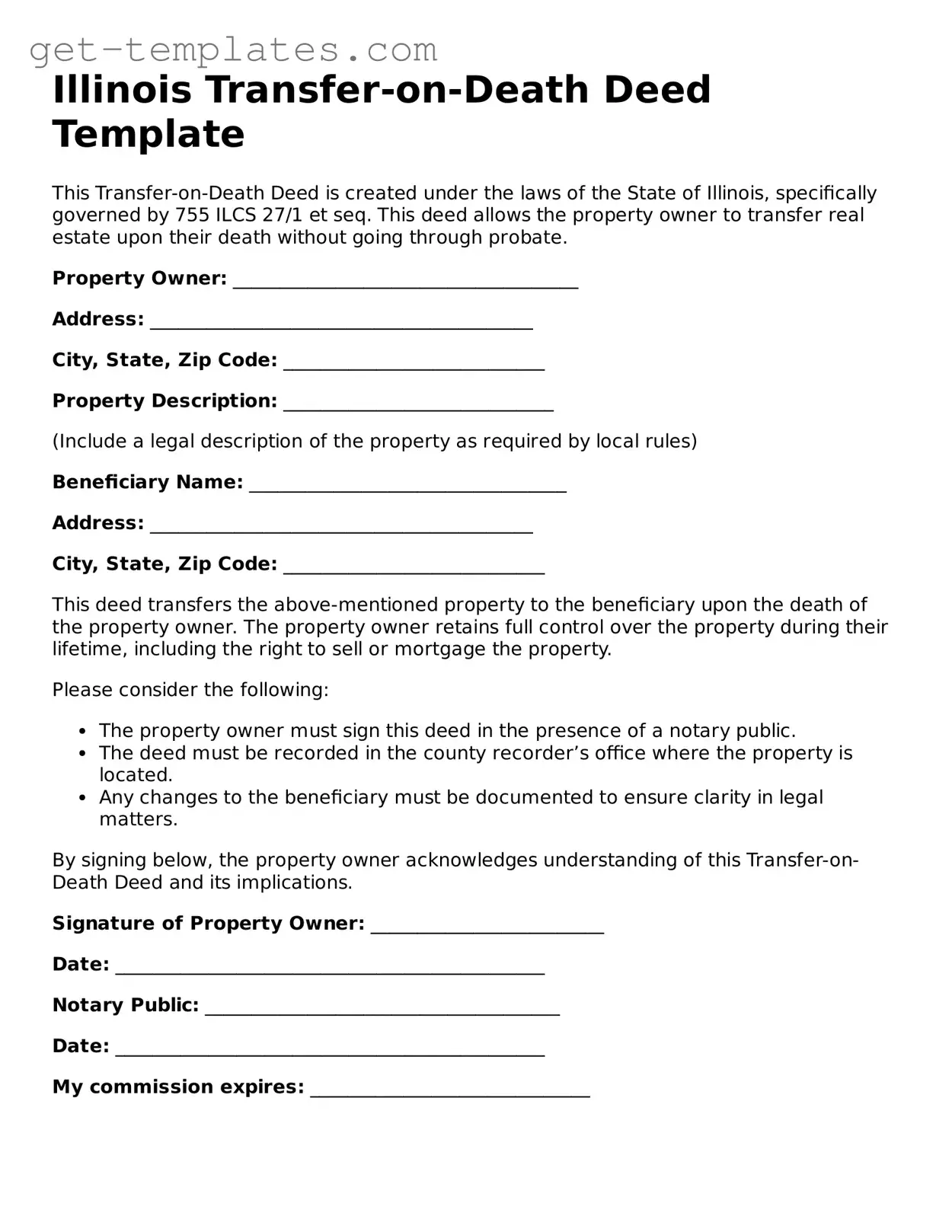Illinois Transfer-on-Death Deed Template
This Transfer-on-Death Deed is created under the laws of the State of Illinois, specifically governed by 755 ILCS 27/1 et seq. This deed allows the property owner to transfer real estate upon their death without going through probate.
Property Owner: _____________________________________
Address: _________________________________________
City, State, Zip Code: ____________________________
Property Description: _____________________________
(Include a legal description of the property as required by local rules)
Beneficiary Name: __________________________________
Address: _________________________________________
City, State, Zip Code: ____________________________
This deed transfers the above-mentioned property to the beneficiary upon the death of the property owner. The property owner retains full control over the property during their lifetime, including the right to sell or mortgage the property.
Please consider the following:
- The property owner must sign this deed in the presence of a notary public.
- The deed must be recorded in the county recorder’s office where the property is located.
- Any changes to the beneficiary must be documented to ensure clarity in legal matters.
By signing below, the property owner acknowledges understanding of this Transfer-on-Death Deed and its implications.
Signature of Property Owner: _________________________
Date: ______________________________________________
Notary Public: ______________________________________
Date: ______________________________________________
My commission expires: ______________________________
